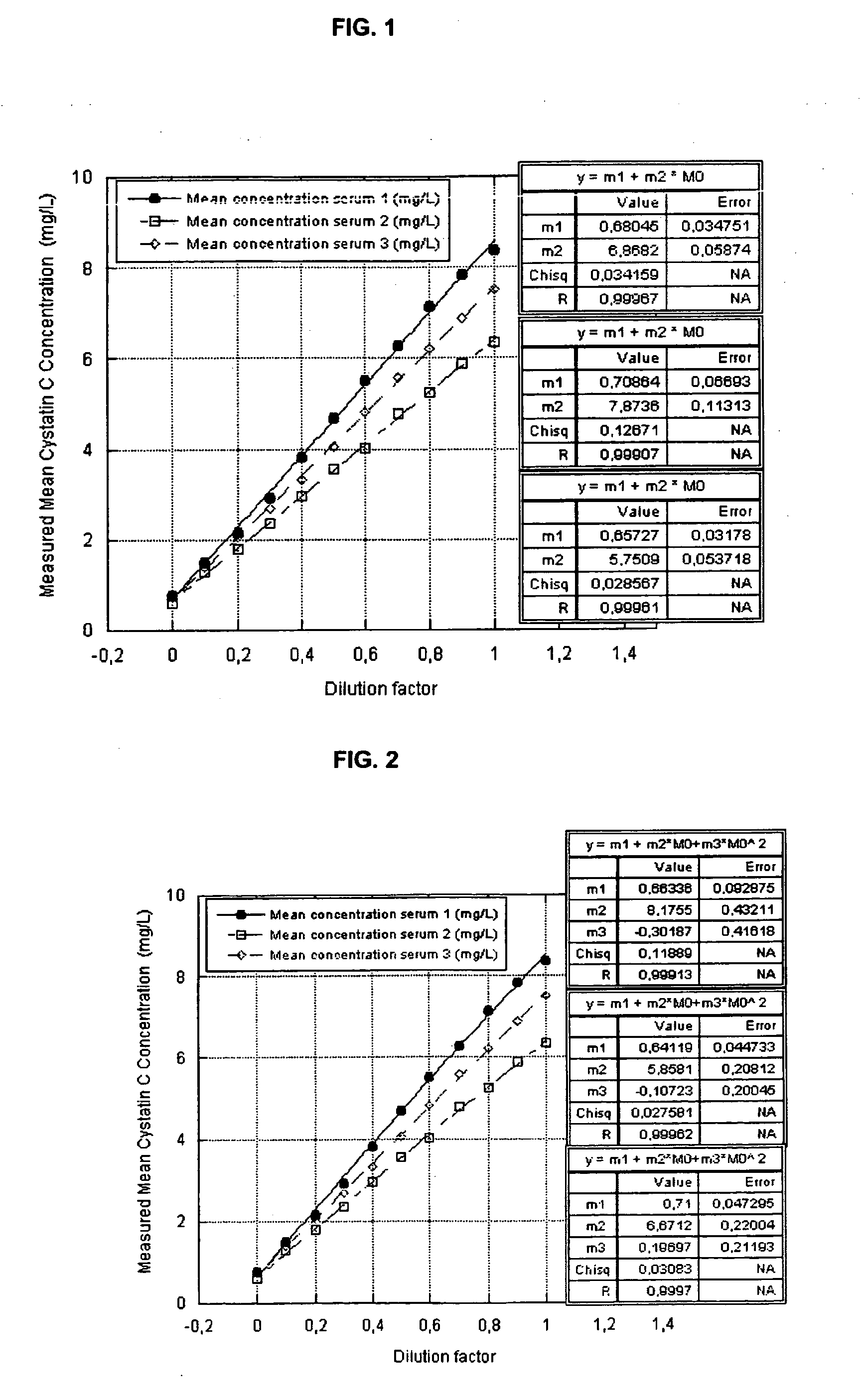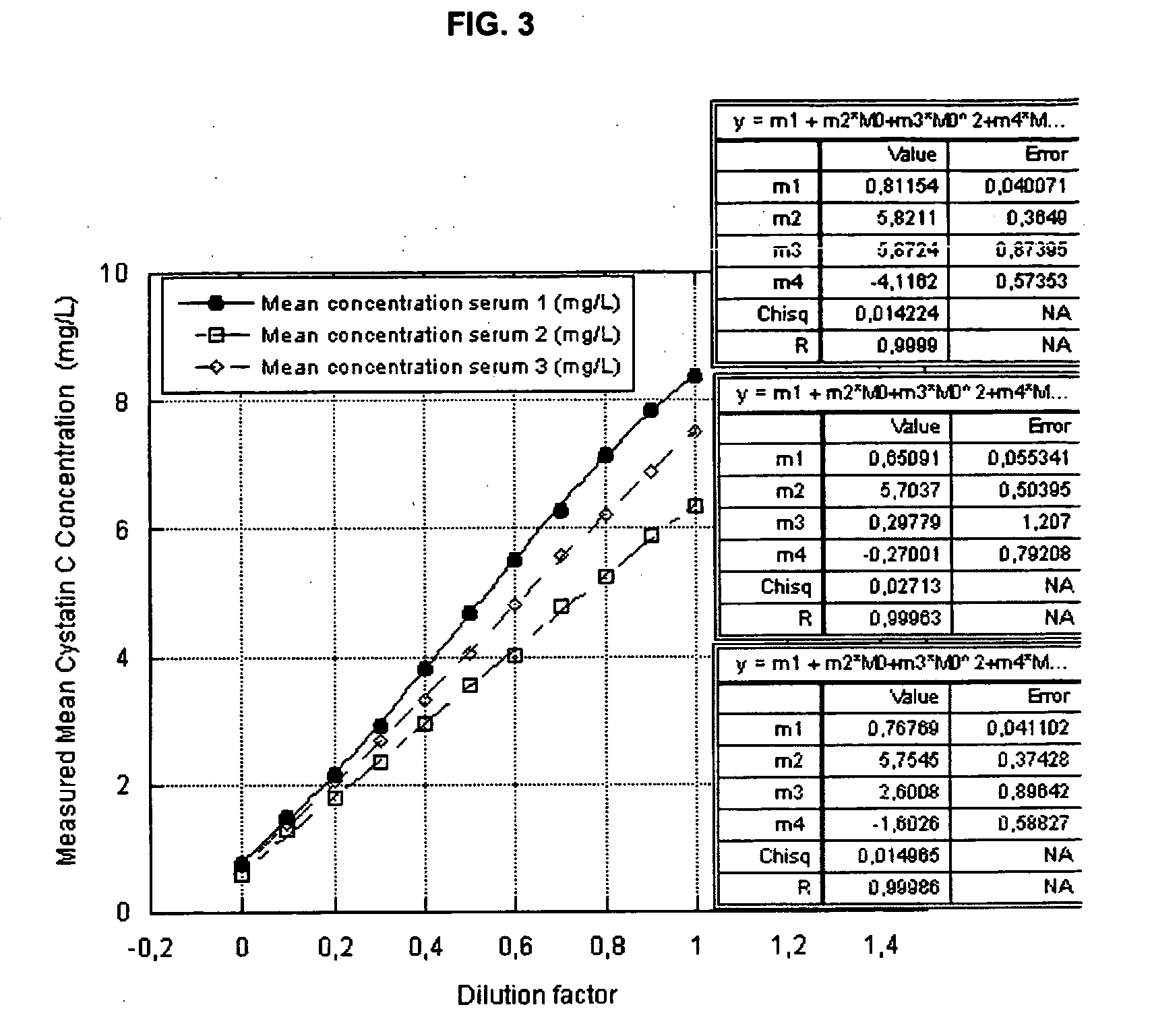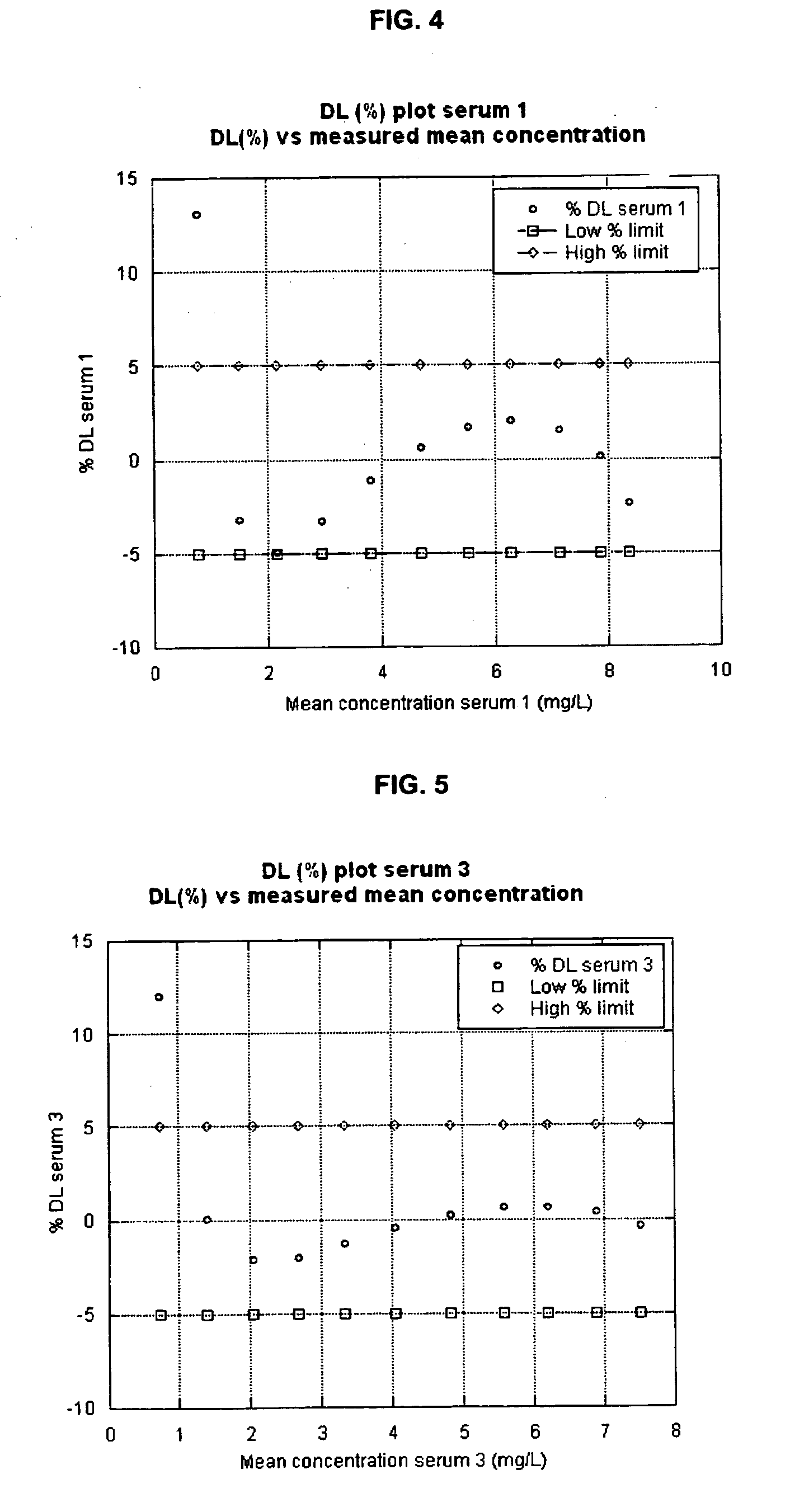Turbidimetric immunoassay for assessing human cystatin c
a technology of immunoassay and cystatin, which is applied in the field of tumorimetric immunoassay for assessing human cystatin c, can solve the problems of unsuccessful prior art products
- Summary
- Abstract
- Description
- Claims
- Application Information
AI Technical Summary
Benefits of technology
Problems solved by technology
Method used
Image
Examples
synthesis example 1
Preparation of Polyclonal Avian Serum and Affinity Purification thereof
a) Preparation of Avian Serum
[0169]The following immunization protocol may be used for the generation of polyclonal IgY antibodies against human Cystatin C:
[0170]Two to four hens are used for each immunization experiment. A couple of eggs are collected before immunization begins. IgY purified from these eggs will serve as the control IgY. 100 μg of highly purified human Cystatin C (purified from urine of patients with tubular proteinuria) in phosphate buffer was emulsified with Freund's complete adjuvant and injected into the breast muscle of hens. The injection was repeated every 4 weeks. 10 weeks after the start of the injections, eggs were collected. The egg yolk was isolated from the eggs, and the IgY fraction from the egg yolk was isolated by ammoniumchloride precipitation, in a conventional manner according to prior art methods of egg antibody isolation (see for example Larsson A, Baaloew R-M, Lindahl T, an...
synthesis example 2
Preparation of Monoclonal Anti-Human Cystatin C Antibodies
[0173]The preparation of monoclonal anti-human Cystatin C antibodies may be performed as follows by making use of methods well known in the art, described for example by Harlow et al., 1988, Section 6 of “Antibodies: a Laboratory Manual”, Cold Spring Harbor Press, New York, USA. Human PSA was isolated from human seminal plasma as described Sensabaugh et al., 1990, J. Urology 144, 1523.
[0174]Mice were immunized in regular intervals with 4 injections of 50 μg human Cystatin C in RAS (RIBI adjuvant system). Four months after the first injection lymphocytes isolated from the spleen of the immunized mice were fused with the myeloma cell line SP2 / 0-Ag14 using the polyethyleneglycol method as described by G. Galfre et al., 1981, Methods in Enzymology, 73, 3-46.
[0175]Hybridomas secreting an antibody against Cystatin C were identified by the following screening ELISA: microtiterplates were coated with rabbit anti-human-Cystatin C immu...
synthesis example 3
Preparation of Anti-Cystatin C Immunoparticles
a) Coupling Process—Standard Procedure:
(1) Buffers & Reagents
[0179]
MES Buffer0.01 MpH 6Borate Buffer0.05 MpH 9.3PBS Buffer0.05 MpH 7.2Storage Buffer0.05 M TRISpH 8.4; 1 g / l glycine; 1 g / l Tween 202 g / l albumin, 1 g / l transferrinAntibodyAb of your choice at a concentration of1.0 mg / ml in MESUltraCleanAs supplied at 4% solids.Chloromethyl Latex
[0180]In order to have more signal from the polymer particles per mg of antibody the pH of coupling buffer was adapted in a specific way to the pi of the antibodies to be coupled. In addition the antibodies were diluted with albumin / transferrin prior to coupling (see below). For coupling a pH half a unit above the pi of the antibody was chosen when monoclonal antibodies were used. Polyclonal antibodies have a quite diverse pi, and so with polyclonal antibodies pH of 8.8 was used. The chosen pH was obtained by mixing the above mentioned PBS and borate buffers.
[0181]The following standard procedure out...
PUM
| Property | Measurement | Unit |
|---|---|---|
| Temperature | aaaaa | aaaaa |
| Temperature | aaaaa | aaaaa |
| Fraction | aaaaa | aaaaa |
Abstract
Description
Claims
Application Information
 Login to View More
Login to View More - R&D
- Intellectual Property
- Life Sciences
- Materials
- Tech Scout
- Unparalleled Data Quality
- Higher Quality Content
- 60% Fewer Hallucinations
Browse by: Latest US Patents, China's latest patents, Technical Efficacy Thesaurus, Application Domain, Technology Topic, Popular Technical Reports.
© 2025 PatSnap. All rights reserved.Legal|Privacy policy|Modern Slavery Act Transparency Statement|Sitemap|About US| Contact US: help@patsnap.com



